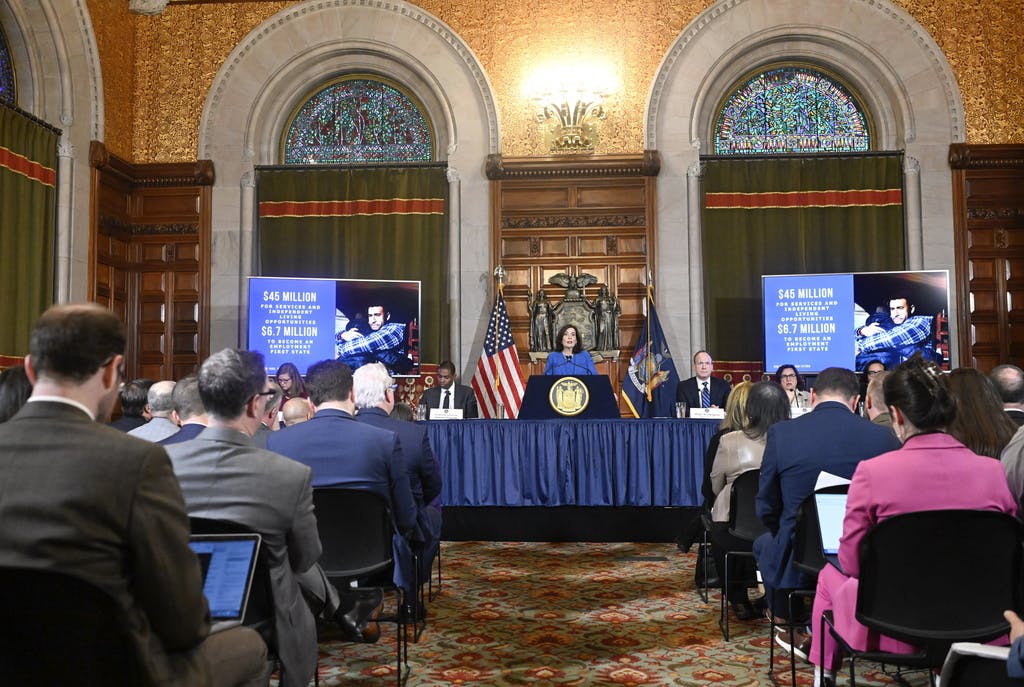With New York Facing Unexpected Budget Surpluses, Why Not a Tax Cut for Residents and Businesses?
Consider the economic context: out-migration to other states of more than 700,000 residents since 2020; anemic post-Covid private sector job growth barely surpassing 1 percent in 2023; and inflation eroding salary increases.

With New York facing unexpected city and state budget surpluses, the moment is ripe to consider something that hasn’t happened in the Empire State in years — tax cuts.
Consider the economic context: out-migration to other states of more than 700,000 residents since 2020; anemic post-Covid private sector job growth; and inflation eroding salary increases.
Notwithstanding these sobering realities, state and city tax revenues are running higher than expected, while expenses are lower than feared.
Unanticipated multi-billion dollar budget surpluses are predicted for both New York State — $2.2 billion this year, according to the Governor’s fiscal 2025 Executive Budget — and New York City — $1.3 billion this year and $3.5 billion the next, the City Council reports.
Typically, surpluses are used to prepay debt service and expenses, and cover budgetary risks. And, admittedly, the budget picture isn’t as rosy in future years, with gaps predicted. The population declines, economic woes, and surpluses, though, create a new paradigm.
Proceeding as if these were usual times and ignoring today’s new context, the State Assembly and Senate recently passed one-house bills — opposed by the governor — increasing tax rates on individuals.
Every day one reads trial balloons of new tax and spending proposals, and presumably negotiations have increased in intensity as the April 1 deadline nears.
How about taking a new look at proven policies from successful administrations of both parties, including Governor Carey, a Democrat, and, more recently, Governor Pataki, a Republican, during the downturn of the 1990s? The legislature and Governor should not simply spend the unforeseen windfall. They should boldly cut taxes.
New York State government spending has increased to more than $229 billion in Fiscal Year 2024 from approximately $187 billion in fiscal 2021. Has that growth been spent wisely? Let’s leave that discussion for another time.
Meanwhile, though, think tanks list the Empire State as having the highest total tax burden and individual income tax burden of all states. New Yorkers clearly are overtaxed.
Crime and safety concerns, an influx of indigent migrants, underperforming schools, and the lack of affordable housing are all contributing to the exodus from New York.
Those major problems need to be addressed in a comprehensive way following political input from various stakeholders and lengthy discussions. Yet the deadline for the 2025 state budget is imminent.
State individual income tax rates currently range between 4 percent and 10.9 percent. The smart policy decision would be to make New York immediately more attractive to the broad middle class by cutting those rates across the board. The result will spur the economy and help stave off the population exodus.
While the personal income tax is the largest generator of revenue for New York State — approximately $60 billion in fiscal 2023, down from $70 billion the year before — a significantly smaller source of revenue is the estate tax — approximately $2 billion.
The estate tax encourages elderly residents of means to leave New York, and promptly slashing or eliminating it would encourage many to remain for the great restaurants, museums, cultural activities, and local healthcare services. The added societal advantage of keeping baby boomers near their parents and children is obvious.
Cutting business taxes in a responsible and productive way should be a priority, but that may take more time and analysis. Governor Hochul should immediately create a bi-partisan task force with a year-end deadline to craft tax cuts that would encourage productive businesses to remain and expand.
New York needs to grow its job base, too. Years after we learned during Covid about supply chain risks, many commonly used medicines are still imported from Asia.
So it’s a no-brainer to encourage pharmaceutical companies to locate in New York State by reducing corporate taxes and subsidizing lower local property taxes for drug manufacturers willing to move here.
Using New York’s political clout at Washington can assist that effort by creating a new category of tax-exempt bonds to finance the moves — but we need not wait for that.
Predicting budgets is a difficult task, but the recently announced unexpected surpluses could be the initial sources of funding for this menu of tax cutting ideas.
We need to think out of the box, ignore the polemics of class warfare, embrace a new growth paradigm, and jump-start our local economy. New York should cut taxes now.
